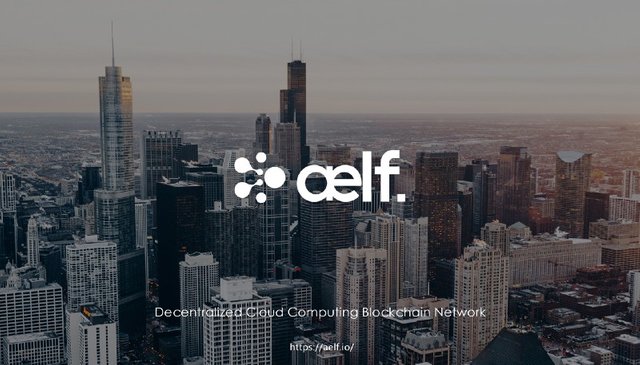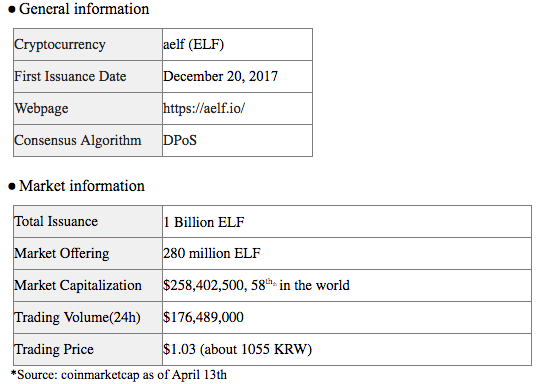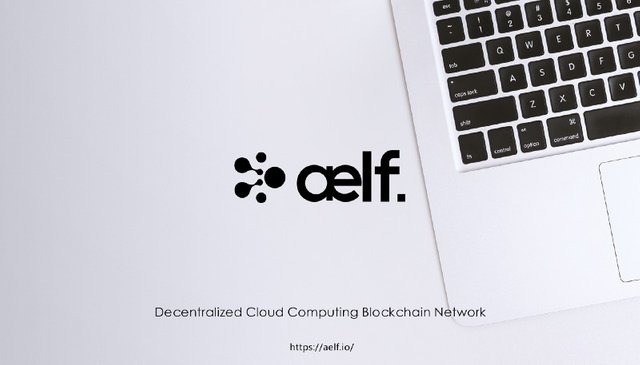A little refresher on aelf

Summary
1) What is aelf?
ælf is a decentralized self-evolving cloud computing blockchain network that aims to provide a high performance platform for commercial adoption of blockchain. In order to establish a blockchain infrastructure for various commercial requirements, ælf provides a highly efficient multi-chain parallel-processing system with cross-chain communication and self-evolving governance. It brings 4 key innovations:
- Scalable nodes on cluster of computers
- Parallel processing for maximum utilization of processing power
- Resource isolation for smart contracts via independent and specialized side chains
- Interoperability to run on and flexibility to choose from different consensus protocols (DPoS - native, PoW, PoS) and private / public chain
ELF tokens are used to pay resource fees in the system, such as deployment of smart contracts, operating and upgrading of systems (transaction fees, cross- chain data transfer fees). It also enables the community to vote on major on-chain decisions, such as electing mining nodes, introducing new features to the system and other major decisions, which collectively enable self-evolution capability of the network.
2) Details

aelf foundation is the governance entity for aelf based in Singapore. As a non-profit entity, its primary goal is to promote the development of aelf technology and its various applications while facilitating corporation and startups to establish on top of or transform their infrastructure into blockchain. aelf foundation will implement comprehensive management and governance model, fully compliant with regulations and laws in Singapore.
aelf concepts and technological features
1. Processing power & Scalability
i. Each node is a computer cluster network (e.g., a cloud network) instead of a singular computer. By leveraging cloud networks as nodes, aelf aims to further empower the network participants with higher computational power as well as the storage capability.
ii. Parallel processing algorithm is developed and integrated to each node to ensure the optimal utilization of all the participating computers in the cloud network. When a node handles a complex set of transactions within a smart contract, it will dissect the transactions into groups of those that do not demonstrate interdependency and process them in parallel simultaneously. Consequently, the takt time is minimized and the overall processing speed maximized.
iii. A node's capacity can be easily scaled by adding new computers to the existing network without having to upgrade the node computer's hardware.
2. Independence & Specialization
i. Multichain network: each side chain is independent from one another and smart contracts resides are executed directly from a side chain, not through the main chain. This enables each side chain to be impervious to the high traffics on another chain, thereby localizing the traffic concentration and guaranteeing consistent transaction speed for smart contracts executed in other side chains. Each side chain would also have the ability to host its own set of nodes to guarantee low traffic and determine its own processing speed.
ii. Each side chain is specialized for a specific business scenario, e.g., token issuance (ICO), insurance database, in-game transactions, etc, and their consensus protocol, node delegation, chain privacy and various other chain qualities can be tailored to best support the specific business scenario.
iii. The main chain acts as the ledger and the communication hub, unlocking highly efficient cross chain communication, triggering of smart contracts across side chains and effective synchronization between chains with different speeds.
3. Governance & Flexibility
i. aelf aims to bestow its network participants an entirely self-evolving authority and capability through its voting protocol. aelf coin holders will have the ability vote on a diverse sets of critical decisions that will collectively shape the eco-system; this includes the decision for each side chain to host their own delegated node, choose whether the participating side chain will be public or private, determine the size and the speed of the side chain, remove or add side chains to the network, etc.
ii. aelf utilizes Merkle tree root based chain indexing to communicate and interoperate with other consensus protocol based blockchains such as PoW and PoS.
iii. aelf provides side chain templates to its developers for rapid smart contract development for those who do not have the in-depth understanding and capacity for ground-up smart contract coding.
Conclusion
aelf is a decentralized self-evolving cloud computing network that has attracted global attention and is considered to be the next breakthrough in blockchain platform. Its technical vision addresses the major challenges in existing blockchain systems and fits the requirements of commercial adoption in the future.
In addition, aelf has successfully delivered its code as promised on its first technical milestone by the end of March. The overall technical progress is well on track and the current ERC20 token has been listed on most major exchanges globally, reflecting a recognition in its regulatory compliance and technical strength.
aelf's growth owes to the recognition from high-profile global investors, excellent development team and advisors, and active engagement with the community.

Hi! I am a robot. I just upvoted you! I found similar content that readers might be interested in:
https://medium.com/@aelfblockchain/in-case-you-forgot-here-is-a-little-refresher-on-aelf-3d5dbc5a1b47
Looking forward to see task in Steemit.